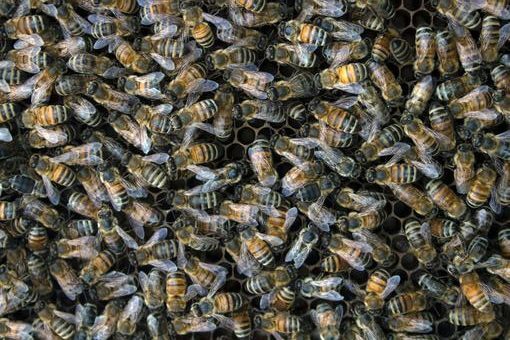The Northern Great Plains of North and South Dakota, which support over 40 percent of United States commercial honey bee colonies, are quickly becoming less conducive to commercial beekeeping as a result of land-use changes, according to a U.S. Geological Survey study published today.
The USGS scientists found that landscape features favored by beekeepers for honey bee colony, or apiary, locations are decreasing in the region, and crops actively avoided by beekeepers, such as corn and soybeans, are becoming more common in areas with higher apiary density. Areas that showed high levels of grassland loss and high apiary density were mostly in central and southern North Dakota and the eastern half of South Dakota.
The study is published in the journal Proceedings of the National Academy of Sciences.
“Insect pollinators are critically important for maintaining global food production and ecosystem health, and U.S. insect pollination services have an estimated annual value of $15 billion,” said Clint Otto, a scientist at the USGS Northern Prairie Wildlife Research Center and the lead author of the report.
The scientists investigated changes in biofuel crop production, including corn and soybeans, and grassland cover surrounding approximately 18,000 registered commercial apiaries in the Dakotas from 2006-2014. Results show a continual increase in biofuel crops totaling 1.2 million hectares, or almost 3 million acres, around apiaries mainly located in the Prairie Pothole Region of the Dakotas. These crops were avoided by commercial beekeepers when selecting apiary sites in the region.
The authors explained that conversion of pasture, conservation grasslands and bee-friendly cultivated crops to biofuel crops likely impact both managed and wild pollinators because it reduces forage availability and increases the use of chemicals that negatively affect pollinators and their ecosystem services.
“Our study identifies areas within the Northern Great Plains that managers can target for honey bee habitat conservation,” Otto said.
This research is important because one of the key goals of the Pollinator Health Task Force strategy is to establish 7 million acres of pollinator habitat by 2020.
Most of the commercial honey bee colonies that spend the summer in the Dakotas provide pollination services for crops such as almonds, melons, apples and cherries elsewhere in the U.S. According to the report, the Northern Great Plains have served as an unofficial refuge for commercial beekeepers because of their abundance of uncultivated pasture and rangelands, and cultivated agricultural crops such as alfalfa, sunflower and canola that provided forage for bees.
For more information about USGS pollinator research in the Northern Great Plains, please visit the USGS Northern Prairie Wildlife Research Center or the USGS Native Bee Inventory and Monitoring Lab websites.
Watch the video, “USGS Pollinator Research and Monitoring.”
If our reporting has informed or inspired you, please consider making a donation. Every contribution, no matter the size, empowers us to continue delivering accurate, engaging, and trustworthy science and medical news. Independent journalism requires time, effort, and resources—your support ensures we can keep uncovering the stories that matter most to you.
Join us in making knowledge accessible and impactful. Thank you for standing with us!

